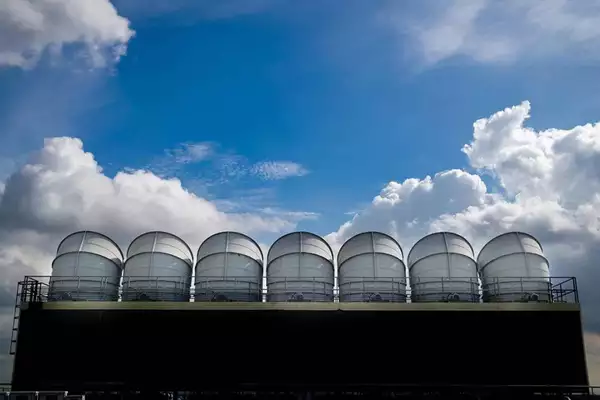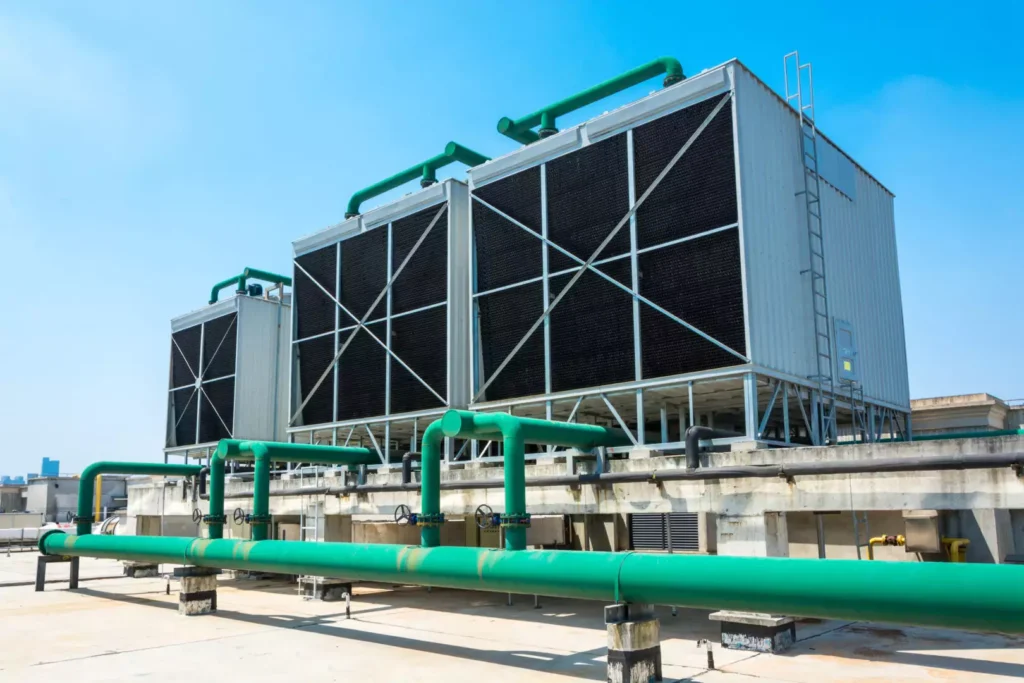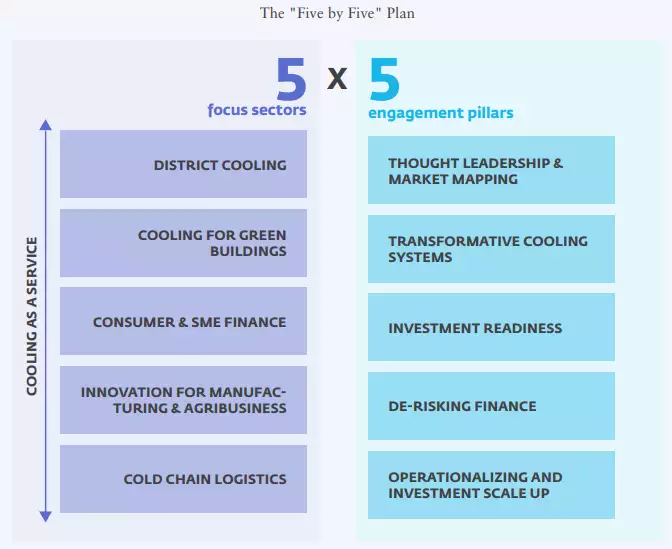A new report by the UN Environment Programme (UNEP)-led Cool Coalition and International Finance Corporation (IFC) highlights a massive $8 trillion opportunity for sustainable cooling in developing economies by 2050.
Key Insights from the Report
- Market Growth: The cooling market in developing economies is expected to grow from $300 billion to $600 billion annually by 2050.
- Fastest Growing Regions:
- Africa: Cooling market expected to grow sevenfold.
- South Asia: Market to quadruple by 2050.
- Cooling Emissions:
- About two–thirds of global cooling emissions in 2022 came from developing countries.
- This share is projected to rise above 80% by 2050 due to population growth, economic expansion, and urbanization.
- Sustainable Cooling Potential: Sustainable cooling technologies could cut cooling-related emissions by half by 2050 in developing economies.
Need for Sustainable Cooling Solutions
- Environmental Impact: Current cooling solutions contribute to global warming, creating a vicious cycle.
- Emission Growth: ~66% of cooling-related emissions were from developing countries in 2022, and this figure could exceed 80% by 2050.
- Economic Opportunity: Sustainable cooling represents a $600 billion per year market by 2050 and an $8 trillion opportunity for developing economies.
- Health and Safety: Climate change-related casualties, such as ~500,000 deaths annually from global warming, could be reduced with sustainable cooling solutions.
- Achieving SDG Goals: Sustainable cooling solutions can contribute to various Sustainable Development Goals (SDGs), including SDG 13 (Climate Action).
Challenges Faced by Developing Countries
- Systemic Issues:
- Demand Side: High upfront costs, high risks for consumers.
- Supply Side: Limited funding sources for small companies, supply chain issues.
- Financial Sector Gaps: Sustainable cooling is not yet considered a traditional asset class, complicating investments.
Key Recommendations from the Report
- Regulation and Safeguards:
- Strengthen minimum energy performance standards for cooling systems.
- Promote energy efficiency and sustainability in cooling technologies.
- Financing Solutions:
- Increase public funding and mobilize private capital for sustainable cooling projects.
- Develop new funding models, such as retail finance for households.
- Other Recommendations: Track cooling finance and its impacts as the market grows to ensure progress and identify opportunities for improvement.
India’s Initiatives for Sustainable Cooling
- India Cooling Action Plan (2019): Aims to reduce cooling demand by 20-25% by 2037-38.
- Super-Efficient Air Conditioning Programme (Energy Efficiency Services Limited): Promotes energy-efficient air conditioners to reduce power consumption and emissions.
- Energy Conservation Building Code (ECBC): Developed by the Bureau of Energy Efficiency to promote energy-efficient construction in buildings.
Ref: Source
| UPSC IAS Preparation Resources | |
| Current Affairs Analysis | Topperspedia |
| GS Shots | Simply Explained |
| Daily Flash Cards | Daily Quiz |
Frequently Asked Question:
What is the expected growth of the cooling market in developing economies by 2050?
The cooling market is expected to grow from $300 billion to $600 billion annually by 2050.
Which regions are projected to experience the fastest growth in the cooling market?
Africa’s cooling market is expected to grow sevenfold, and South Asia’s market is projected to quadruple by 2050.
How can sustainable cooling technologies impact emissions by 2050?
Sustainable cooling technologies could reduce cooling-related emissions by 50% by 2050 in developing economies.
What economic opportunities does sustainable cooling present by 2050?
Sustainable cooling represents a $600 billion per year market by 2050 and an overall $8 trillion opportunity for developing economies.
What is India’s initiative to promote sustainable cooling?
India’s Cooling Action Plan aims to reduce cooling demand by 20-25% by 2037-38.





